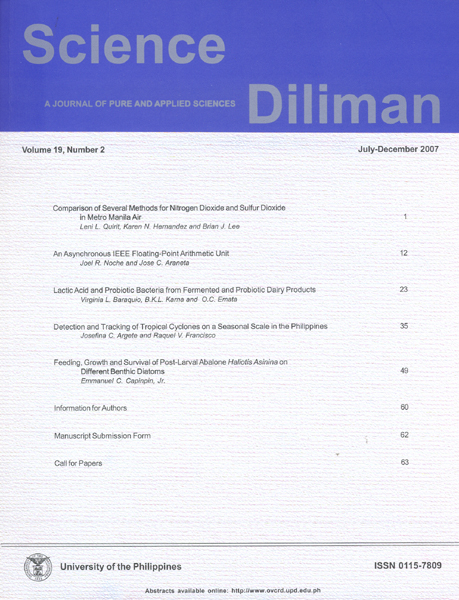Feeding, growth, and survival of post-larval abalone <i>Haliotis asinina</i> on different benthic diatoms
Abstract
The feeding behavior, digestive efficiency, growth, and survival of post-larval abalone Haliotis asinina fed with 5 species of locally isolated benthic diatom strains (Navicula mollis, N. ramosissima, Stauroneis sp., Pleurosigma sp., and Cocconeis sp.) were examined in the laboratory. Two 15-day feeding trials using 1 mm post-larvae were conducted. No significant differences were observed in sizes of post-larval abalone after 15 days in all diatom treatments (P>0.05). However, in both trials, Cocconeis sp. resulted in high survival rates (88.9±5.6% and 80.0±20.0% for Trials 1 and 2, respectively). Cocconeis sp. was efficiently digested by post-larval abalone, with most of the cells being ruptured during ingestion and/or passage through the gut. One diatom strain, Pleurosigma sp., resulted to a high survival but produced the slowest growth rate (<10 ìm.d-1 SL). It was probably not ingested easily during the experiment due to its large size or mobility. For the other diatom strains, N. mollis and N. ramosissima, most cells passed through the gut with the cells left intact. Stauroneis sp. is highly digestible, but did not result to high survival, although the remaining live post-larval abalone fed on this diatom as well as on N. mollis grew faster during the second week of both feeding trials. N. ramosissima resulted to poorest survival rate (<10%) due to its poor digestibility. Only Cocconeis sp. showed a fairly high growth rate, digestion efficiency, and survival rate. N. mollis which gave a fairly high survival rate and Stauroneis may be added towards the later stages of post-larval rearing as well as other large diatoms. The digestion efficiency of diatom strains is considered an important factor determining its dietary value, but other factors may also be important such as volume contents, biochemical composition, and other physical characteristics.
Published
2008-01-15
Issue
Section
Articles
Keywords
Digestive efficiency; Growth; Survival; Post-larval abalone; Haliotis asinina; Diatoms
Submission of a manuscript implies: that the work described has not been published before (except in the form of an abstract or as part of a published lecture, review, or thesis); that it is not under consideration for publication elsewhere; that its publication has been approved by all co-authors, if any, as well as by the responsible authorities at the institute where the work has been carried out; that, if and when the manuscript is accepted for publication, the authors agree to the automatic transfer of the copyright to the publisher; that the manuscript will not be published elsewhere in any language without the consent of the copyright holders; that written permission of the copyright holder is obtained by the authors for material used from other copyrighted sources; and that any costs associated with obtaining this permission are the authors’ responsibility.



